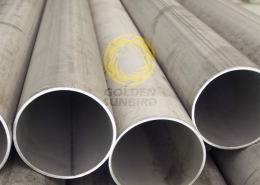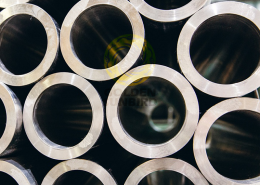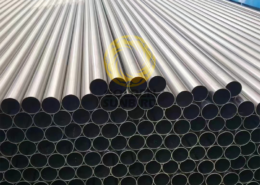AMS4900 CP Grade 3 Titanium Plate and Sheet
- Commercial pure grade 3 (CP Grade 3)
- Annealed condition
- Yield Strength: 55 ksi (379 MPa)
- Good Balance of Strength and Formability
- Excellent Corrosion Resistance
- Good Weldability
- Biocompatible
Features
AMS4900 CP Grade 3 Titanium Sheet, Strip, and Plate Commercially Pure Annealed, 55 ksi (379 MPa) Yield Strength
Chemical Composition of AMS4900 (wt.%)
| Element | Composition |
|---|---|
| Iron (Fe) | 0.30% max |
| Oxygen (O) | 0.30% max |
| Carbon (C) | 0.08% max |
| Nitrogen (N) | 0.05% max (500 ppm) |
| Hydrogen (H) | 0.015% max (150 ppm) |
| Other Elements, each | 0.10% max |
| Other Elements, total | 0.30% max |
| Titanium (Ti) | Remainder |
Mechanical Properties of AMS4900
| Property | Value |
|---|---|
| Tensile Strength | 65 ksi (448 MPa) |
| Yield Strength | 55 – 80 ksi (379 – 552 MPa) |
| Elongation | 18% |
Technical Specifications
| Specification | Value |
| Standard | AMS4900 Titanium Sheet, Strip, and Plate Commercially Pure Annealed, 55 ksi (379 MPa) Yield Strength |
| Grade | Grade 3 |
| Melting Practice | The alloy shall be produced by electron beam cold hearth or plasma arc cold hearth melting practice, or multiple melted. When multiple melts occur, the first melt shall be made using a vacuum consumable electrode, non-consumable electrode, electron beam cold hearth, or plasma arc cold hearth melting practice. The subsequent melt or melts shall be made using vacuum arc remelting (VAR) practice. Alloy additions are not permitted in the final remelt. |
| Type | Titanium Sheet, Strip, and Plate |
| Dimension | Strip: Width 25.4-1219.2mm x Thickness 0.41-4.75mm |
| Sheet: Width 1000-2000mm x Thickness 0.41-4.75mm | |
| Plate: Width 1000-2000mm x Thickness 4.75-101.6mm | |
| Density | 4.51g/cm³ |
| Condition | Sheet and Strip: Hot rolled, with or without subsequent cold reduction, annealed, descaled, and leveled, having a surface appearance comparable to a commercial corrosion-resistant steel No. 2D finish. Plate: Hot rolled, annealed, descaled, and flattened, having a surface appearance comparable to a commercial corrosion-resistant steel No. 1 finish. Plate products shall be produced using standard industry practices designed strictly for producing plate stock to the procured thickness. Bar, billet, forgings, or forging stock shall not be supplied in lieu of plate. |
| Inspection Certificate | EN 10204 Type 3.1 (Mill Test Certificate), EN 10204 Type 3.2 (Witness Testing or 3rd Party Inspection) |
| Tests | Chemical Composition, Mechanical Properties |
Key Properties
Good Balance of Strength and Formability: Offers higher strength than Grade 2 while maintaining good ductility and ease of fabrication.
Excellent Corrosion Resistance: Resists corrosion in seawater, oxidizing environments, and various chemicals.
Good Weldability: Can be easily welded using appropriate techniques.
Biocompatible: Suitable for medical implants and instruments.
Packing
Packed in plywood boxes or on pallets.
Application
Chemical tanks and vessels: Its corrosion resistance makes it suitable for storing and processing various chemicals.
Heat exchangers: Grade 3’s strength and corrosion resistance are ideal for heat exchangers exposed to moderately corrosive environments or higher pressures.
Piping systems: These are used for piping systems that handle corrosive fluids and chemicals, especially where higher strength is required than Grade 2.
Marine hardware and fasteners: Its corrosion resistance to seawater makes it suitable for boat fittings, fasteners, and rigging components.
Marine structures: These are used for structural components in boats and ships where a balance of strength and corrosion resistance is required.
Medical implants: Grade 3 is often used in non-load-bearing or lightly loaded implants like suture anchors, spinal cages, and dental implants due to its biocompatibility and corrosion resistance.
Surgical instruments: Its non-magnetic properties and corrosion resistance make it suitable for surgical instruments.
Architectural applications: It is used for roofing, cladding, and decorative elements where its aesthetics, corrosion resistance, and durability are valued.
Automotive components: Grade 3 can be found in specialized automotive applications like exhaust systems and certain engine parts.
Sports equipment: Utilized in high-end bicycle frames and other sporting goods requiring strength and lightweight properties.








